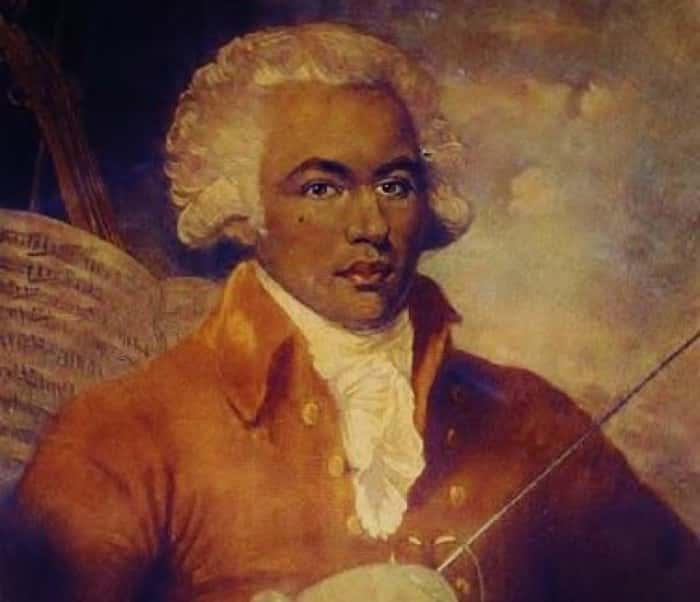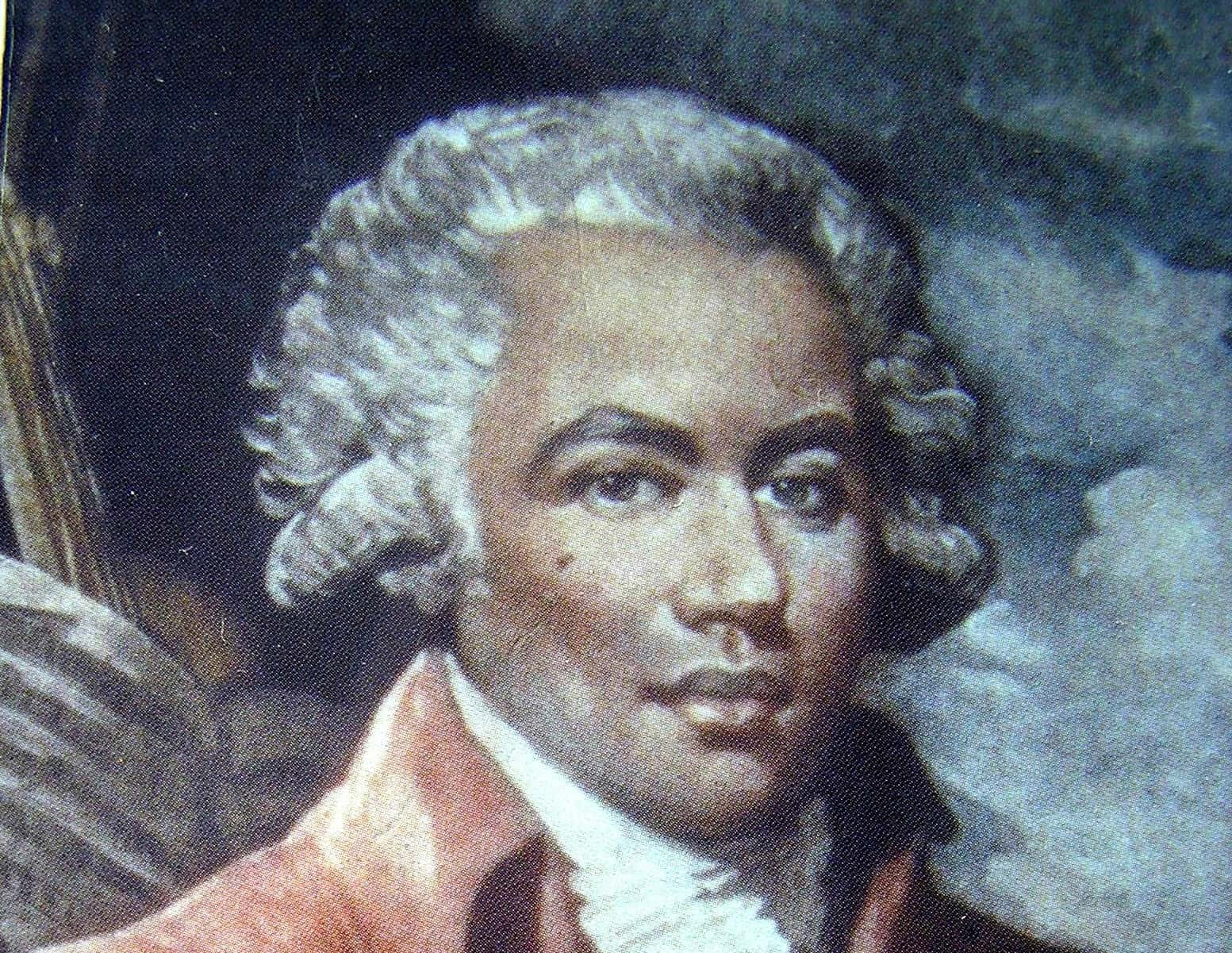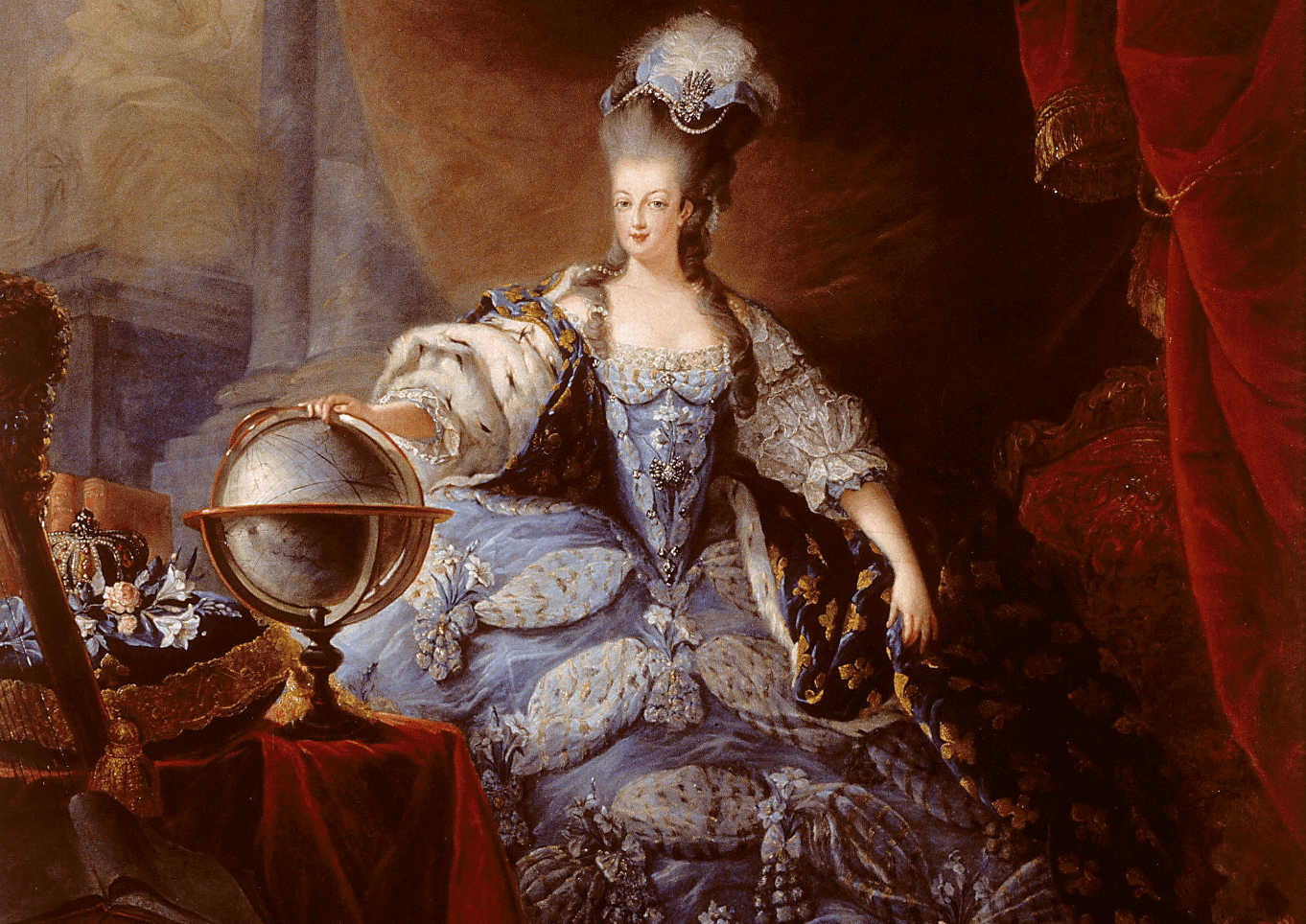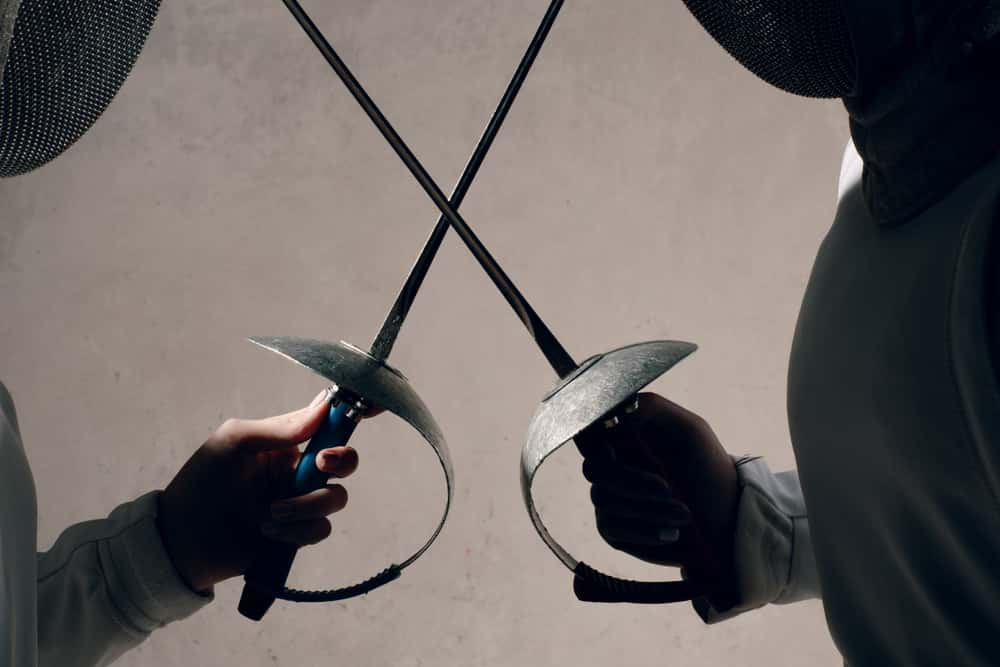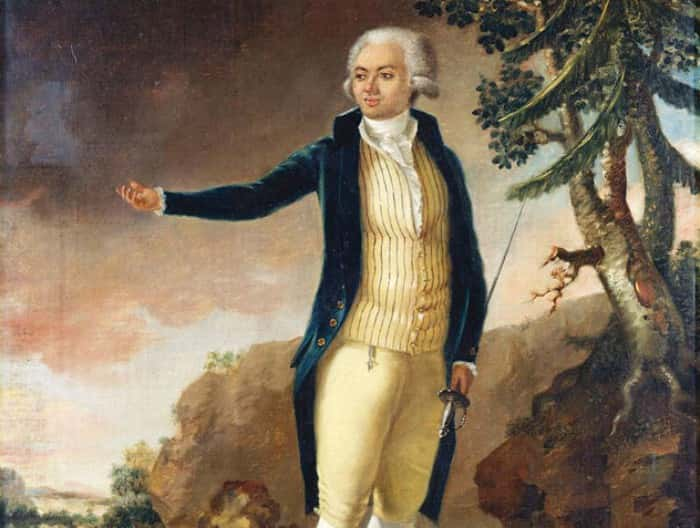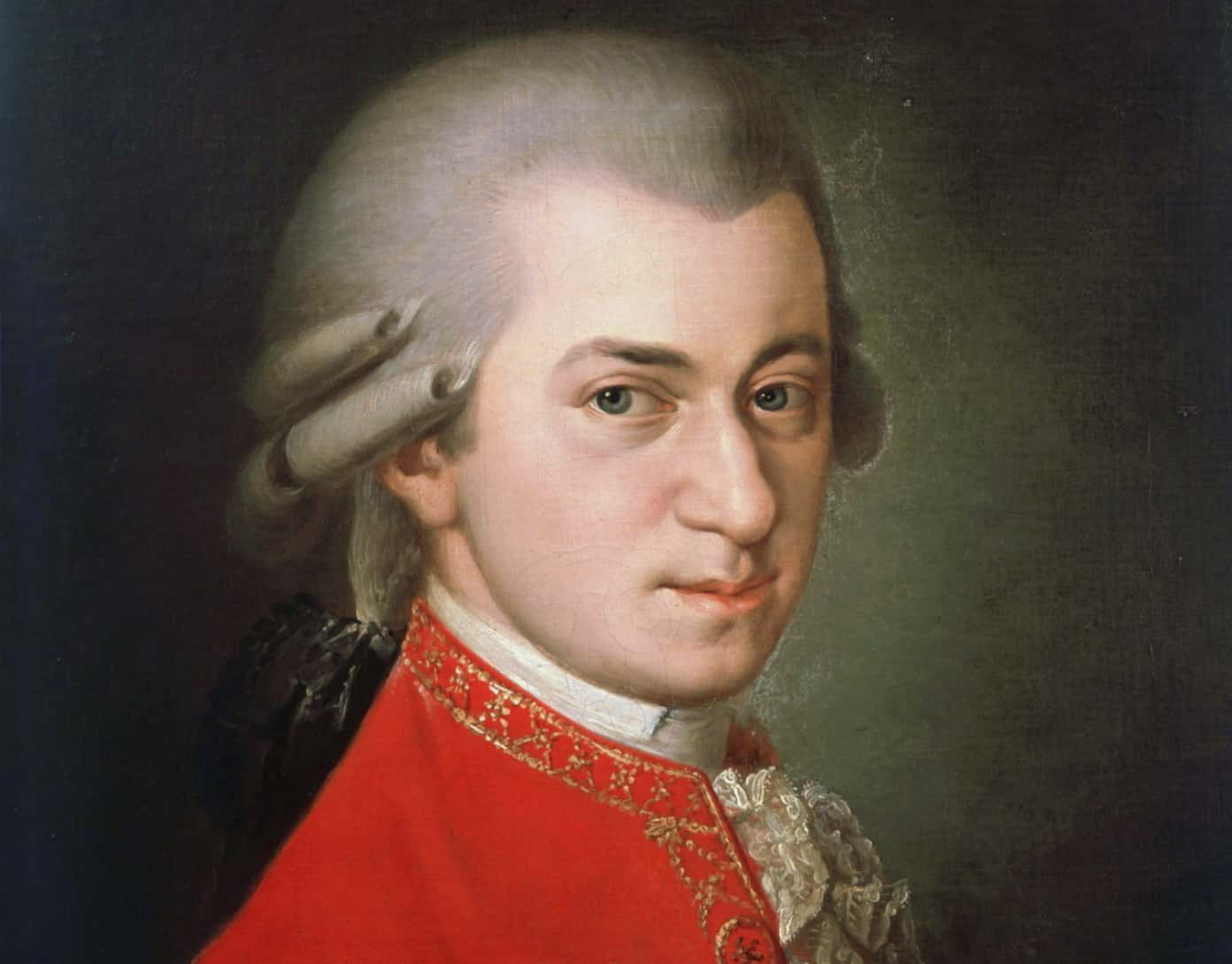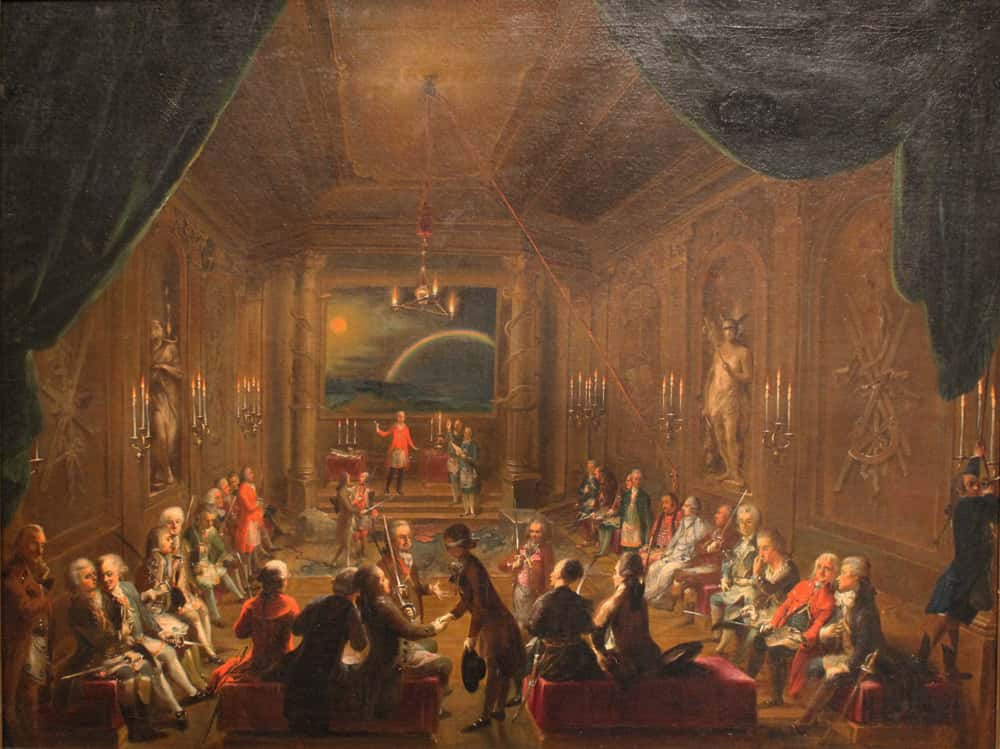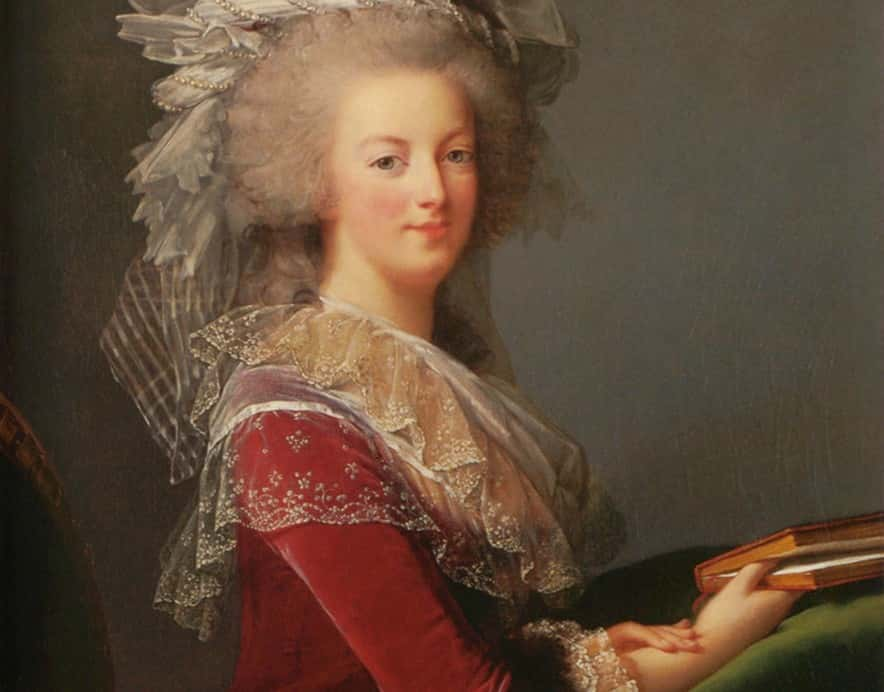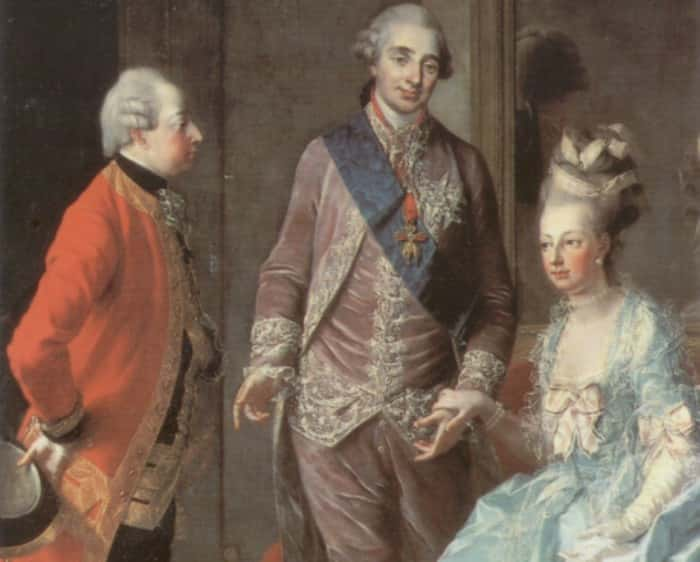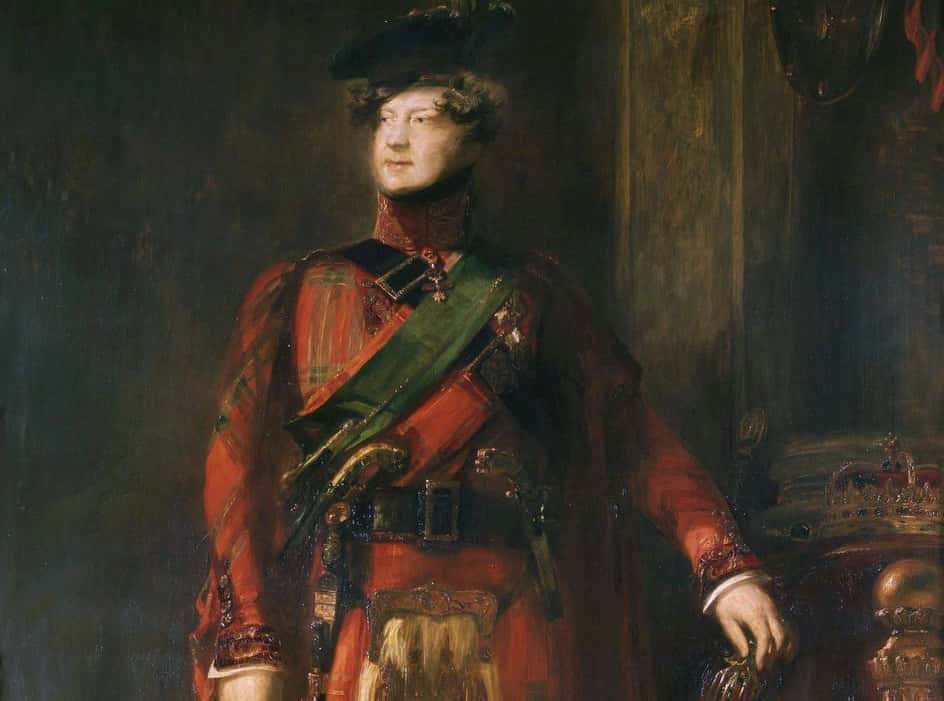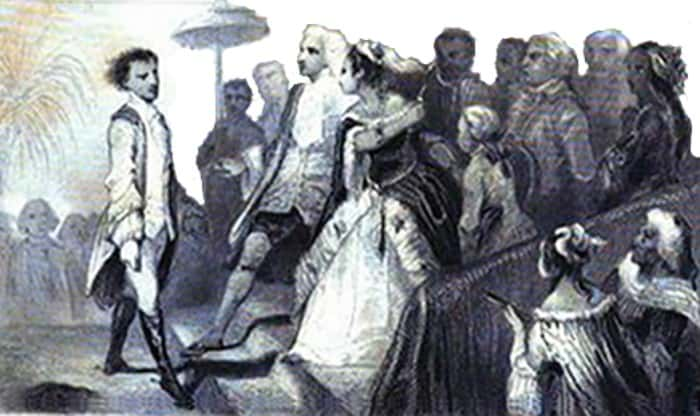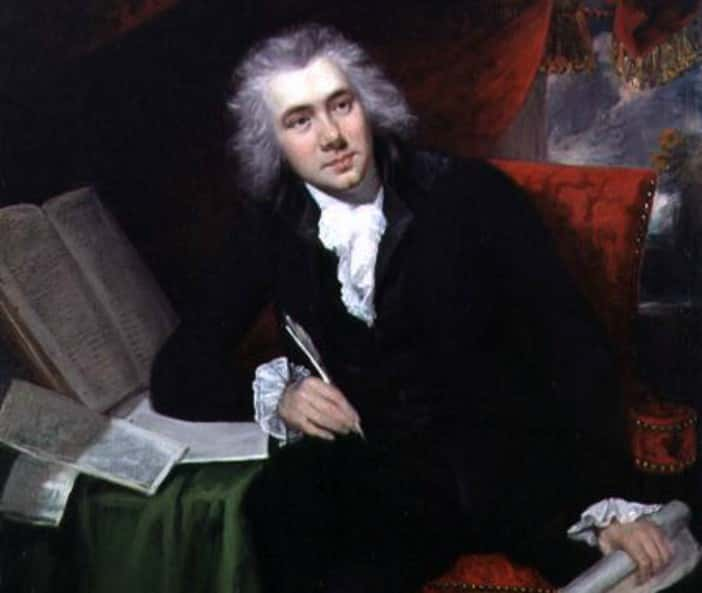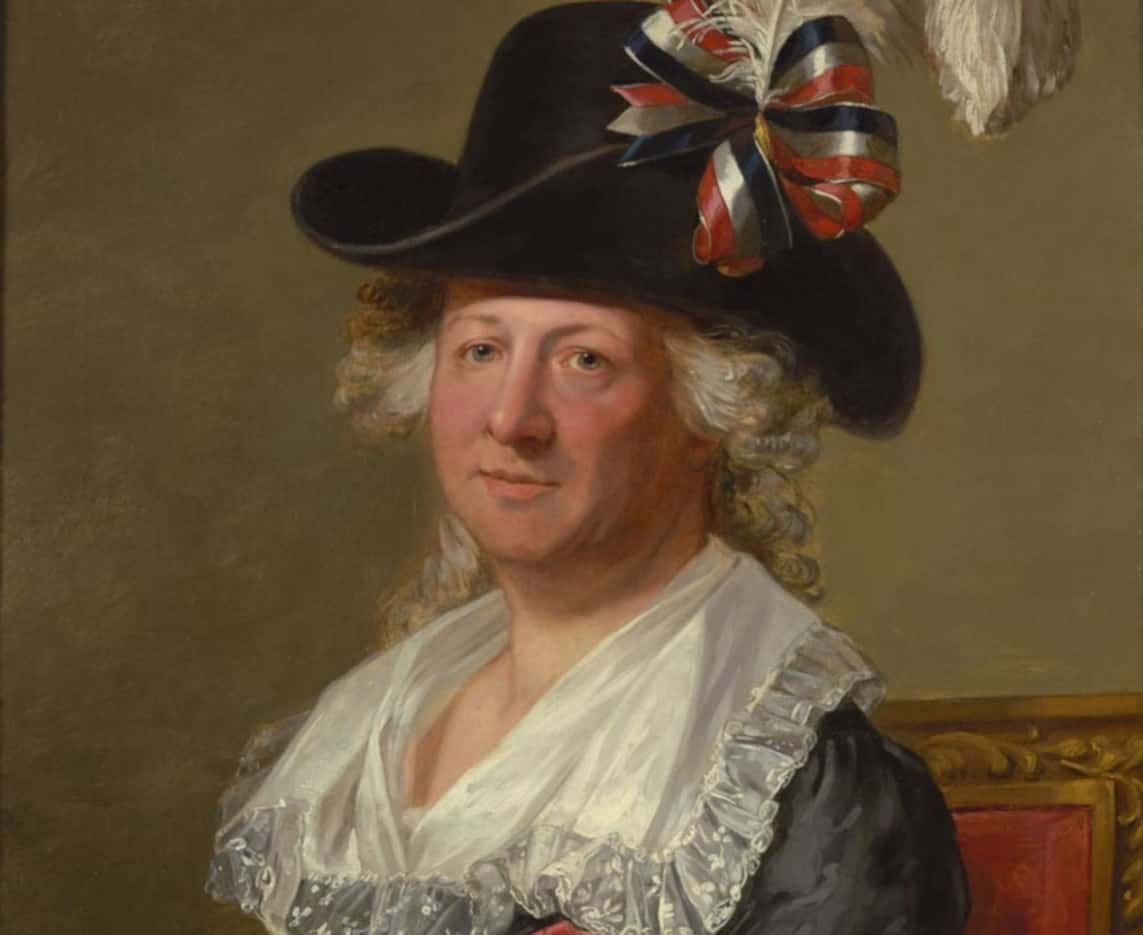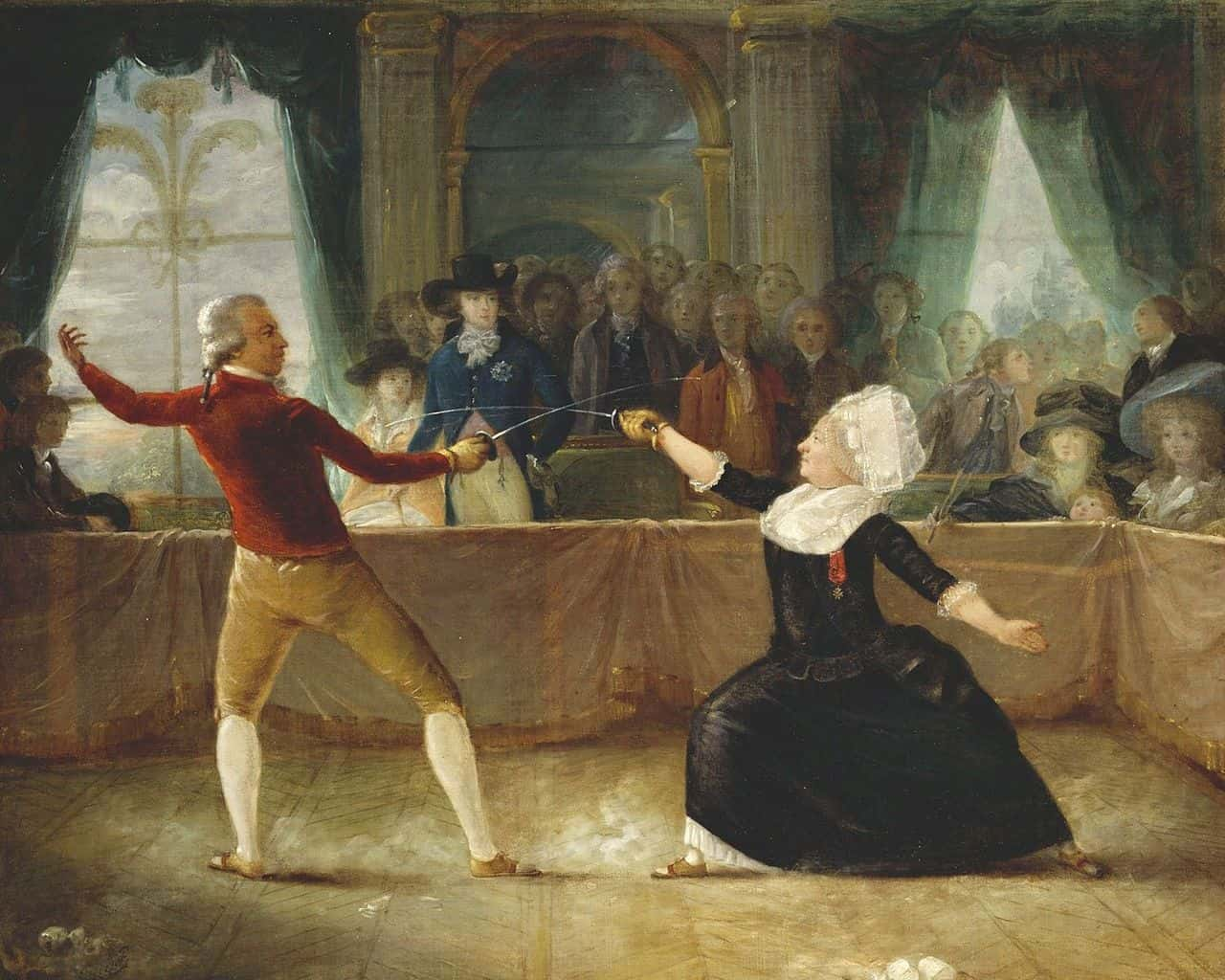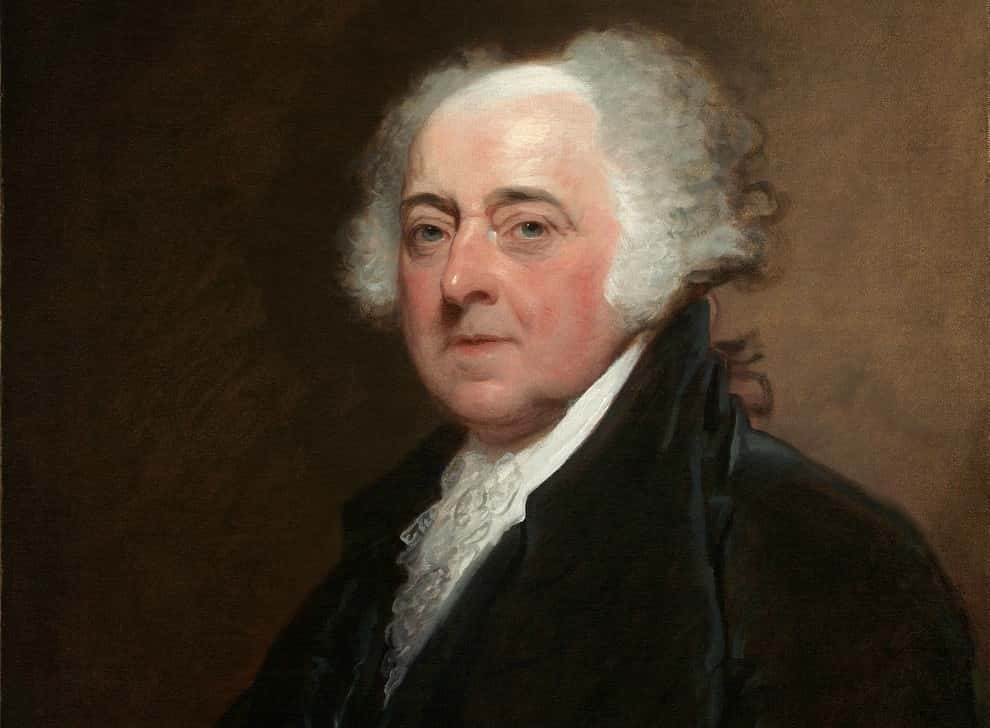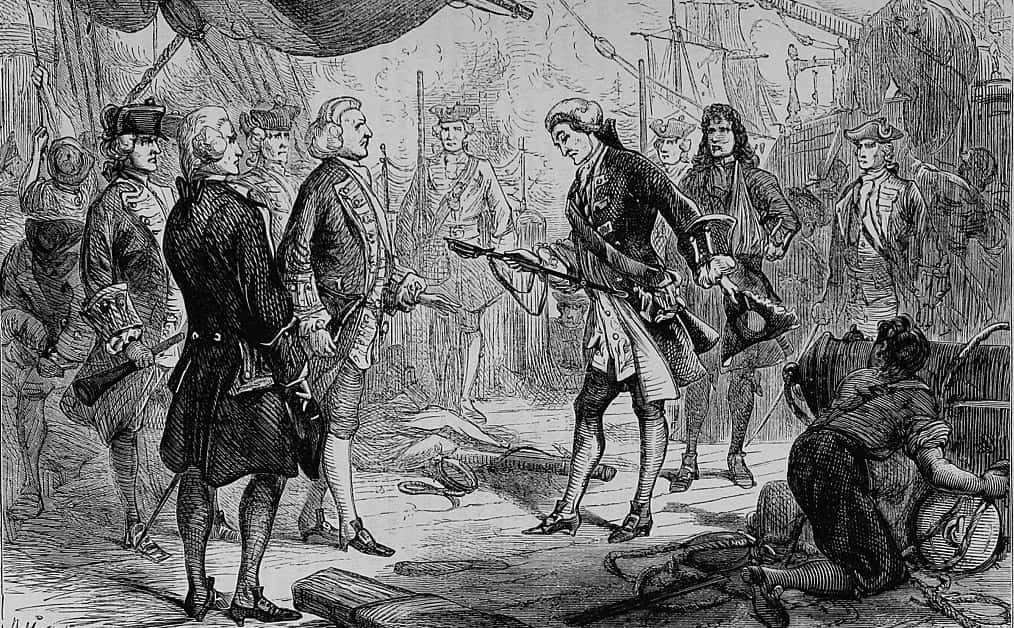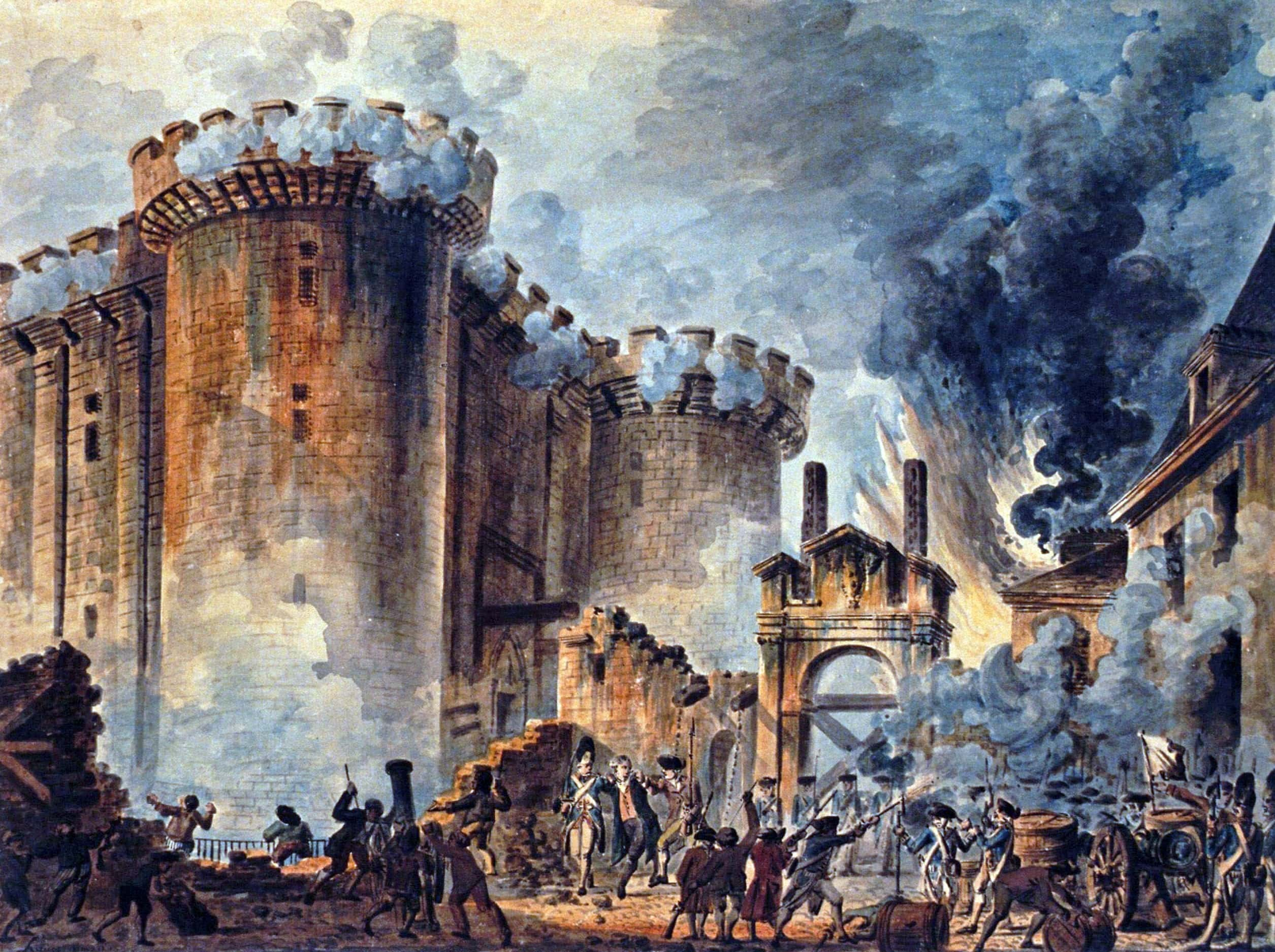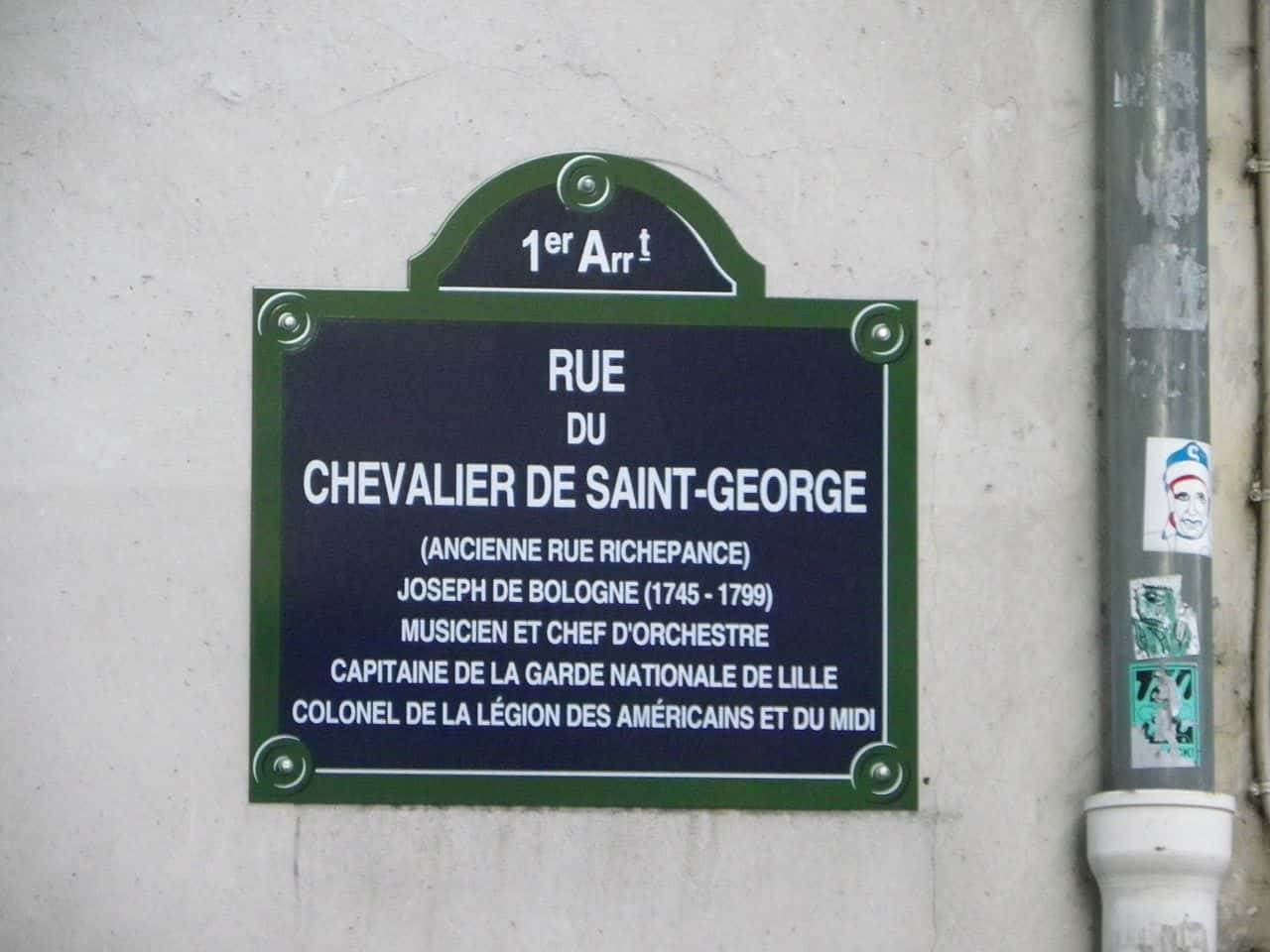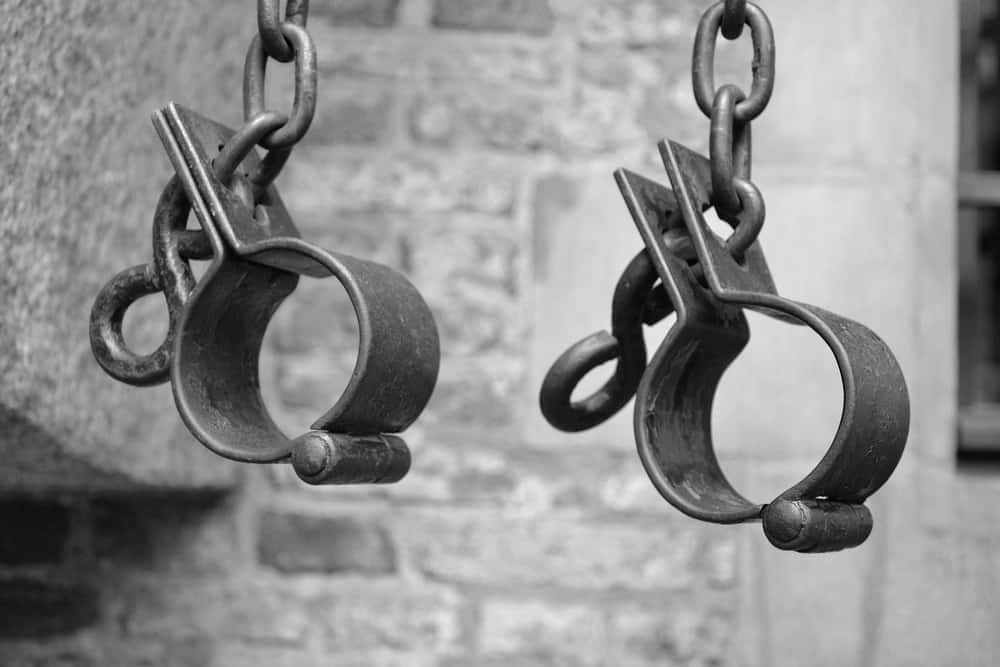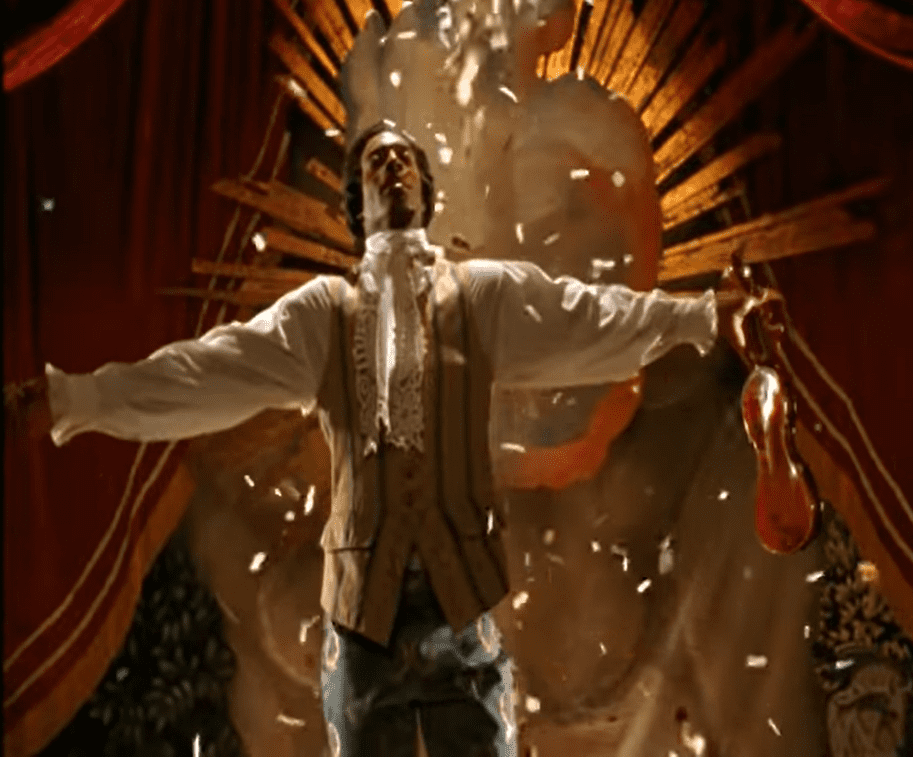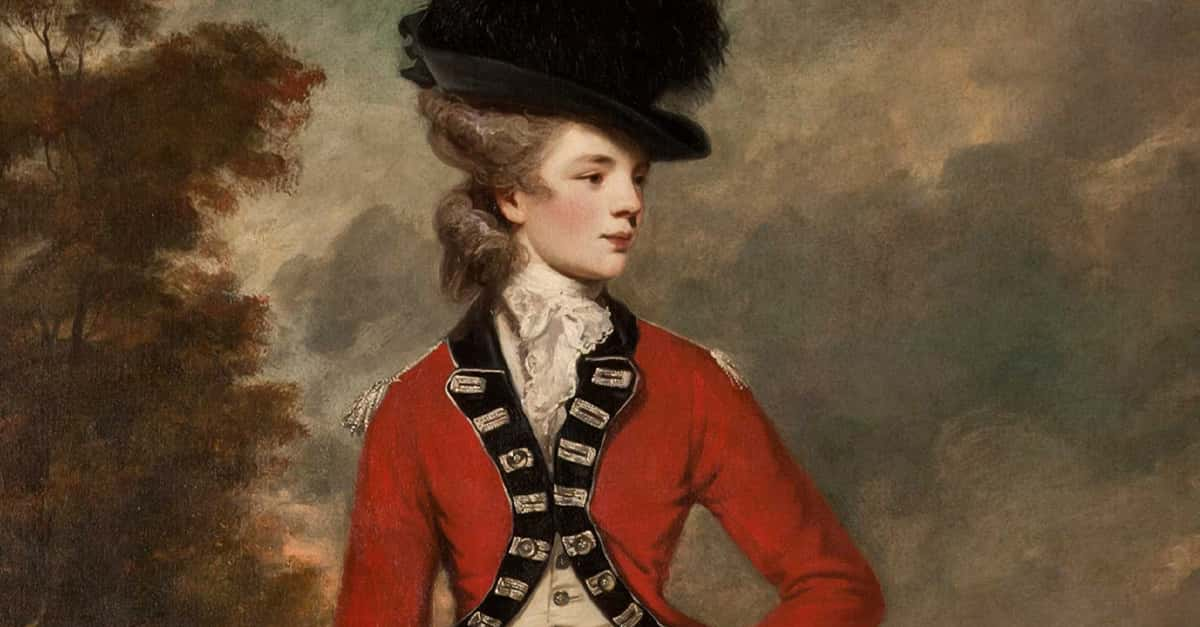As a man of color in the 1700s, the Chevalier de St. Georges had the odds stacked against him—yet he still managed to become a master fencer, steely-eyed fighter, irresistible seducer, and Mozart’s greatest rival. From his days in Parisian music houses to his nights in bloody battlefields, the Chevalier de St. Georges made an impact wherever he went. Strap in and get ready to learn about the coolest man in the 18th century.
Chevalier de St. Georges Facts
1. His Parentage Was Scandalous
From the get-go, the Chevalier de St. Georges defied labels. His parents had vastly different lives: the Chevalier’s father George de Bologne was a wealthy Frenchman, while his mother Nanon was an enslaved African teenager on George's plantation in Guadeloupe. The pair met in 1740—but their union was doomed from the start.
2. His Dad Was a Bad Boy
Historians don’t know much about the relationship between the Chevalier’s parents—but we do know two things. First, George started a relationship with the 16-year-old Nanon almost the moment he arrived. And second, Nanon was far from the only woman in George's life. Grossly enough, the patriarch already had a wife.
 Shutterstock
Shutterstock
3. The World Was Horrific to Him
On Christmas day of 1745, Joseph de Bologne (AKA the Chevalier) entered the world. Yet it was far from a charmed life. For all his father's wealth and influence, the Chevalier's mixed-race heritage meant that his future would be anything but easy. Even so, the Chevalier was determined to beat the odds...and boy, did he ever.
4. He Was a Heartthrob
St. Georges was incredibly handsome. His mother Nanon had a reputation for being “the most beautiful woman in the French West Indies” and clearly, those good looks came through for her son. The Chevalier had high cheekbones, light eyes, and, may I say, phenomenally groomed eyebrows. With his handsome face, athletic frame, and debonair ways, he was an immediate heartthrob.
5. He Had a Famous Flame
Those famous good looks of St Georges got him into trouble. For a time, the Chevalier acted as Marie Antoinette’s personal music tutor—until he got fired for getting “too close” to his royal charge. Bow chicka wow wow.
6. He Had Big Dreams
But no matter how handsome and suave St. Georges was, his mixed-race status meant that the odds would rarely be in his favor. If he wanted to make his mark on society, he’d need to work twice as hard as anyone else. Spoiler: He did. The Chevalier quickly made a name for himself by becoming a master swordsman.
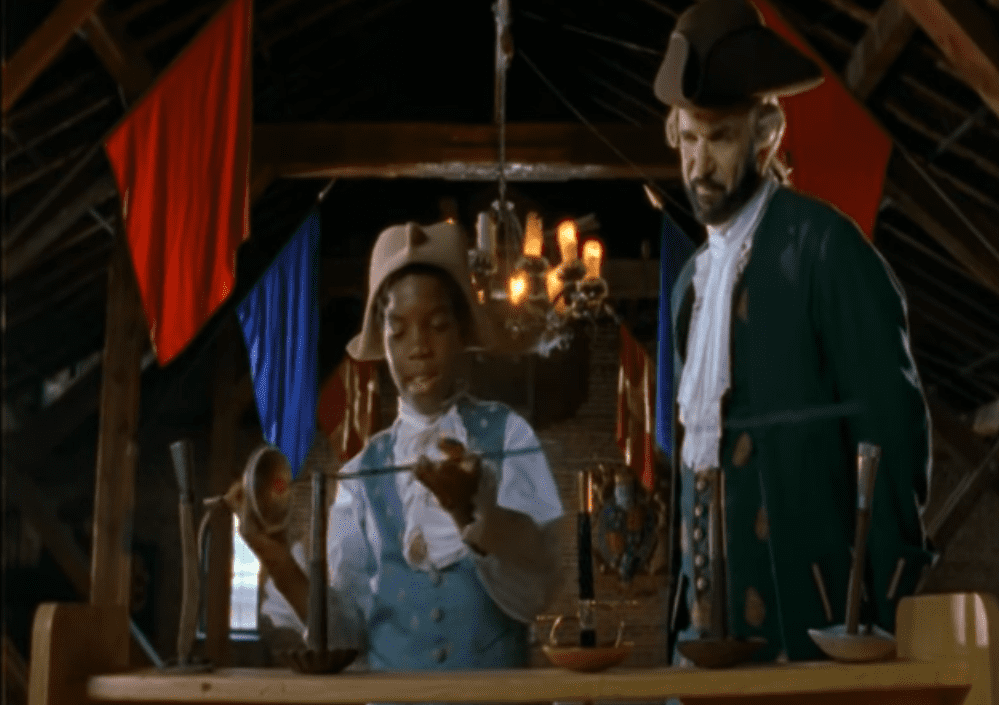 Le Mozart noir (2003), Media Headquarters
Le Mozart noir (2003), Media Headquarters
7. He Became a Master Fencer
Even as a teenager, St. Georges was cool enough to be the main character in a Quentin Tarantino movie. He started training as a fencer and quickly rose to the top of the profession. Nicknamed “the God of Arms,” the young Chevalier regularly beat veterans and champions. And then a formidable foe came calling...
8. An Opponent Challenged Him to a Chilling Duel
Out of all the Chevalier’s early fencing opponents, only one was foolish enough to taunt him into a duel. The master fencer Alexandre Picard provoked St. Georges into a fight by insulting him with a racist nickname. Even though Picard was a fully-grown man and the Chevalier was a teenager, he knew he couldn’t back down from this fight.
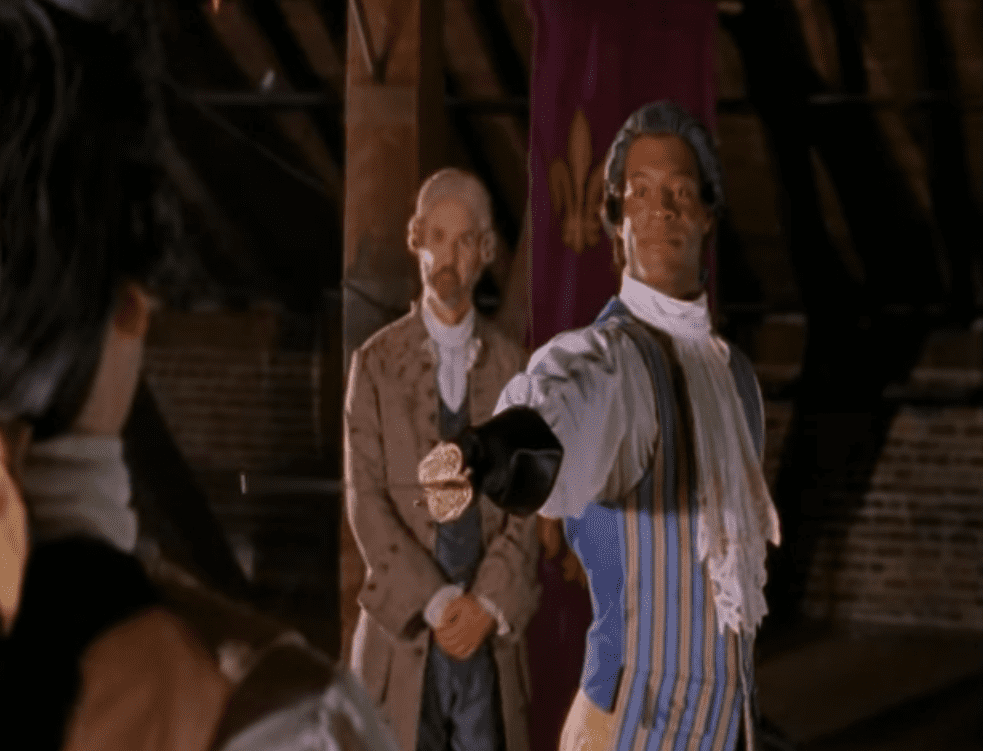 Le Mozart noir (2003), Media Headquarters
Le Mozart noir (2003), Media Headquarters
9. He Made His Opponent Regret it
St. Georges accepted Picard’s challenge—and immediately made him regret it. The bout attracted an enormous crowd who were bitterly divided between our young hero and his rival. So practically everyone was there to see when the young Chevalier beat Picard at his own game and immediately became a living legend.

Sign up to our newsletter.
History’s most fascinating stories and darkest secrets, delivered to your inbox daily. Making distraction rewarding since 2017.
10. His Dad Was Proud
After St. Georges defeated Picard, Papa Bologne was very proud. Like a good 18th-century Daddy Warbucks, he rewarded his son with extravagant gifts. He gave the boy a new horse and carriage to ride about town, and soon after that, the humble "Joseph Bologne" turned into the officially fancy “Chevalier de St. Georges.” But there was a heartbreaking side to these gifts.
11. His Life Would Never Be Easy
It wasn’t uncommon for British men to have children with slaves—but usually, the circumstances surrounding these births were utterly despicable. As always, St. Georges was the exception. His father actually acknowledged him and even moved both seven-year-old St. Georges and the beautiful Nanon to France, where he provided for them. Because of this, historians wonder if St. Georges’ parents were a love match—who tragically couldn’t be together because of discriminatory laws and beliefs.
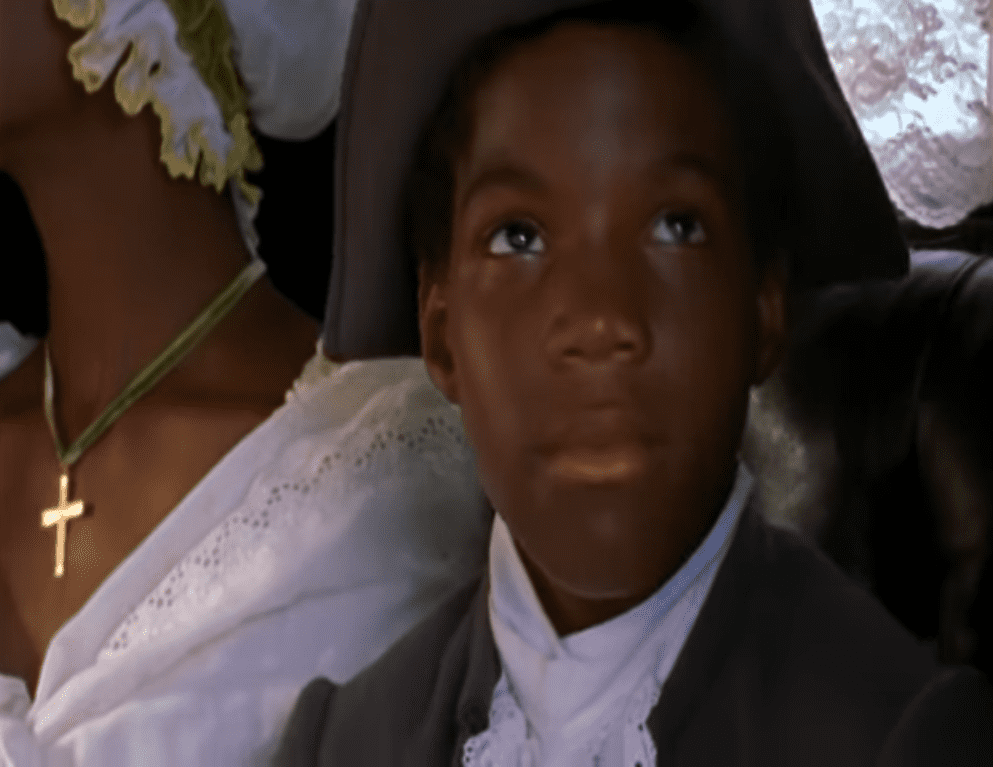 Le Mozart noir (2003), Media Headquarters
Le Mozart noir (2003), Media Headquarters
12. The Odds Were Stacked Against Him
Even with all the fatherly help in the world, the Chevalier’s life would never be a walk in the park. In Paris, all Black people had to register with the authorities—as though their mere existence were a sin. That’s why, even when he was the It Boy of the 18th century, St. Georges’ carousing life-style was uniquely dangerous.
13. He Switched Things up
After finishing school in 1766, Joseph immediately got a daredevil position as one of the King’s bodyguards, but that didn't mean he was all brawn. After earning a reputation for being the swiftest blade in France, the Chevalier changed gears and pursued music. His career trajectory would be dramatic, to say the least—full of feuds, fans, and failures.
14. The Ladies Loved Him
The Chevalier de St. Georges was a trained violinist and harpsichordist (does this man do anything by halves?), and soon enough he took his talents to the stage. When St. Georges made his debut as a solo violinist, he “created a sensation” and enraptured his audiences...especially “the feminine members.” But with women came drama.
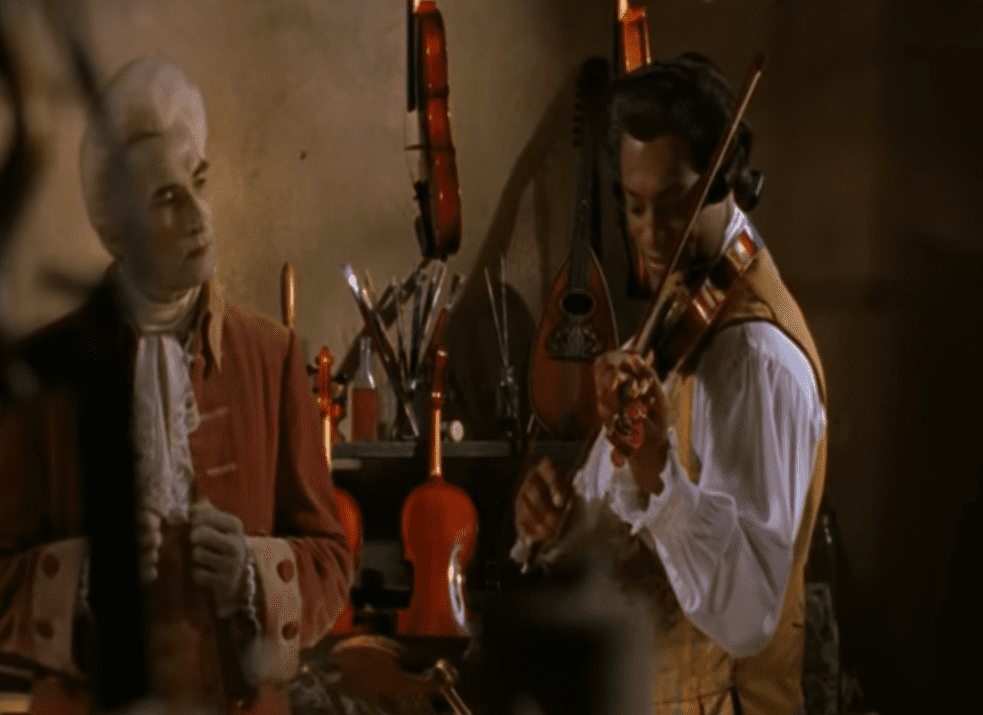 Le Mozart noir (2003), Media Headquarters
Le Mozart noir (2003), Media Headquarters
15. He Had a Heartbreaking Love Life
French women loved the Chevalier for being suave, talented, well dressed, and oh-so-handsome. Even so, Joseph’s love life was far from idyllic. We know that he had a serious courtship with an aristocratic woman, but he could never pursue it like he wanted to. In a heartbreaking twist, they couldn’t marry because of discrimination.
16. He Made Mozart Jealous
In the 1770s, the world was St. Georges' oyster. For one, he became a conductor and immediately skyrocketed to fame. In addition, his orchestra was called the best in Paris “and perhaps in Europe”...and then a young Amadeus Mozart came along. While St. Georges played with the finest symphonies, Mozart was stuck with a less-respected group of musicians. It didn’t take long for Mozart’s competitive side to come out.
17. He Had a Famous Rival
There were a finite number of band geeks in 1770s Paris—and we know for a fact that Mozart and St. Georges crossed paths. Not only did Mozart jealously attend St. Georges' performances, the two men actually stayed in the same estate for two months. As time passed, Mozart’s bitterness and resentment deepened...until he lashed out with a brutal act.
 Le Mozart noir (2003), Media Headquarters
Le Mozart noir (2003), Media Headquarters
18. He Inspired a Classic Villain
According to music historians, the Chevalier de St. Georges may have inspired a classic villain: the Black overseer Monostatos in Mozart’s opera The Magic Flute. As the enemy of the heroic Tamino, Monostatos is grotesque, repulsive, and pathetic. In reality, St. Georges was the exact opposite. Jealous much, Amadeus?
19. The Queen Loved Him
Mozart may not have liked St. Georges—but another major historical figure did. Marie Antoinette adored the Chevalier. Even after St. Georges got canned from being her tutor, Marie went to his symphonies, played piano with him at intimate gatherings, and in 1776, she publicly supported the Chevalier’s dream of becoming the Paris Opera’s new director. Things were looking very rosy for St. Georges. Oh, until everything derailed in a spectacular mess.
20. He Was Unstoppable
The Chevalier did nothing if not achieve, achieve, achieve. He was a great skater, a strong boxer, a formidable hunter, and an elegant horse-back rider. But his most appealing talent was his dancing. Thanks to Joseph’s legendary moves, all the Parisian ladies were desperate to take a turn in his capable arms. Well, almost all the ladies...
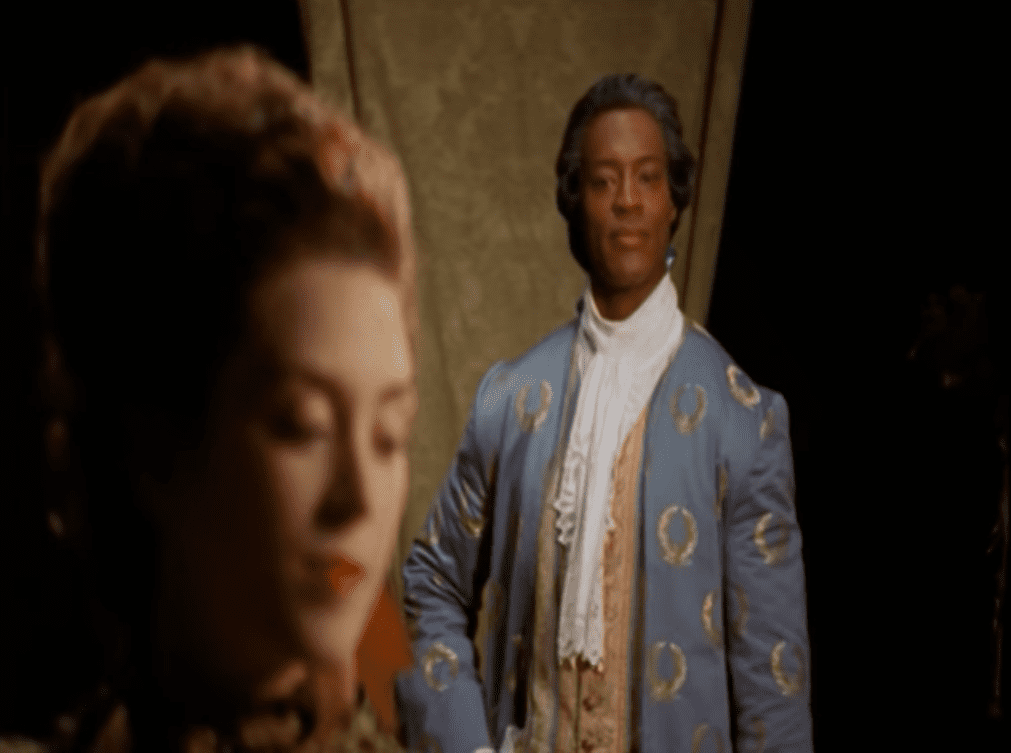 Le Mozart noir (2003), Media Headquarters
Le Mozart noir (2003), Media Headquarters
21. There Were Always Haters
It turns out that not everyone was as accepting as Marie Antoinette. One dancer and two singers from the Opera were furious at the idea of taking orders from a mixed-race man if St. Georges became director. They claimed that their “honor and delicacy” simply wouldn’t permit it. I’d say something other than “delicacy” was operating here, but the results were the same: all out catastrophe.
22. His Friends Turned Their Backs on Him
After these 18th-century Karens made a stink over the Chevalier’s promotion, St. Georges' chances of leading the opera went up in smoke. The French king quietly stopped supporting the Chevalier’s new job and, true to form as a bureaucrat, promptly gave the position to...no one. Unfortunately, St. Georges' slump hadn’t even reached its rock bottom.
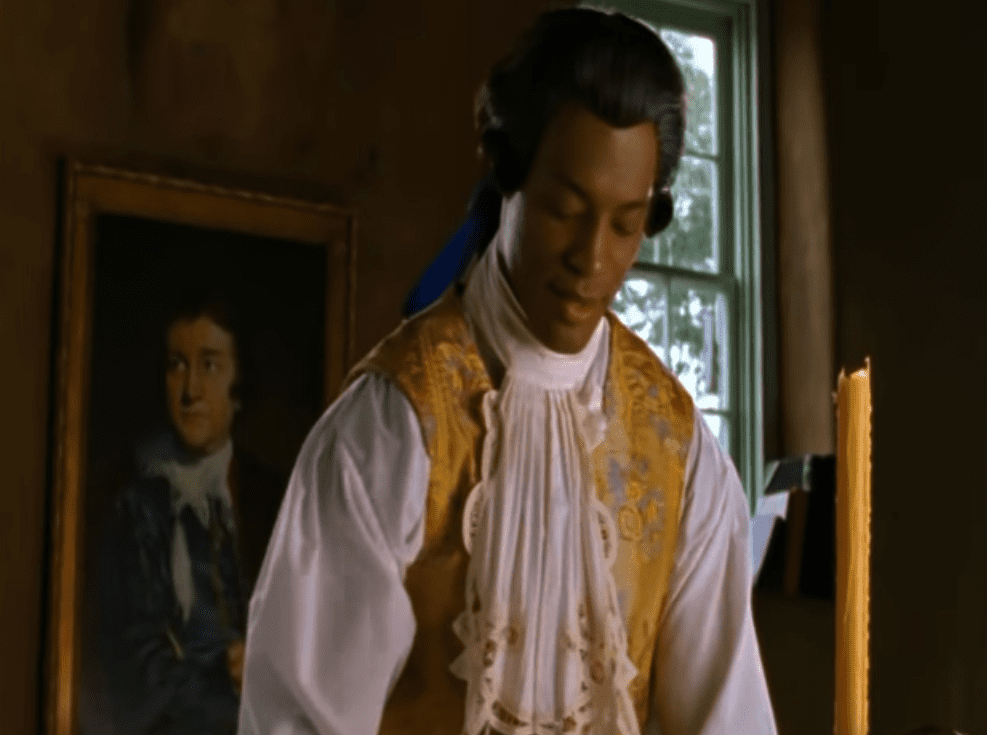 Le Mozart noir (2003), Media Headquarters
Le Mozart noir (2003), Media Headquarters
23. His Opera Was an Embarrassment
After failing to get the job as the Opera’s new head honcho, St. Georges decided to show the Opera what it was missing. In 1777, he wrote his first opera, Ernestine, and released it to great fanfare—just joking, it was a complete failure. Viewers and reviewers alike hated it...and then one of St. Georges' stalwart allies betrayed him in his hour of need.
24. Audiences Hated His New Show
In St. Georges' doomed opera, one character cracks his whip and shouts “Ohé! Ohé!” Mortifyingly enough, this kind of became a mocking meme in 18th-century Paris. Spectators would say the line and cruelly laugh at St. Georges' operatic flop. While that dubious fame couldn’t have felt good, things would get much worse.
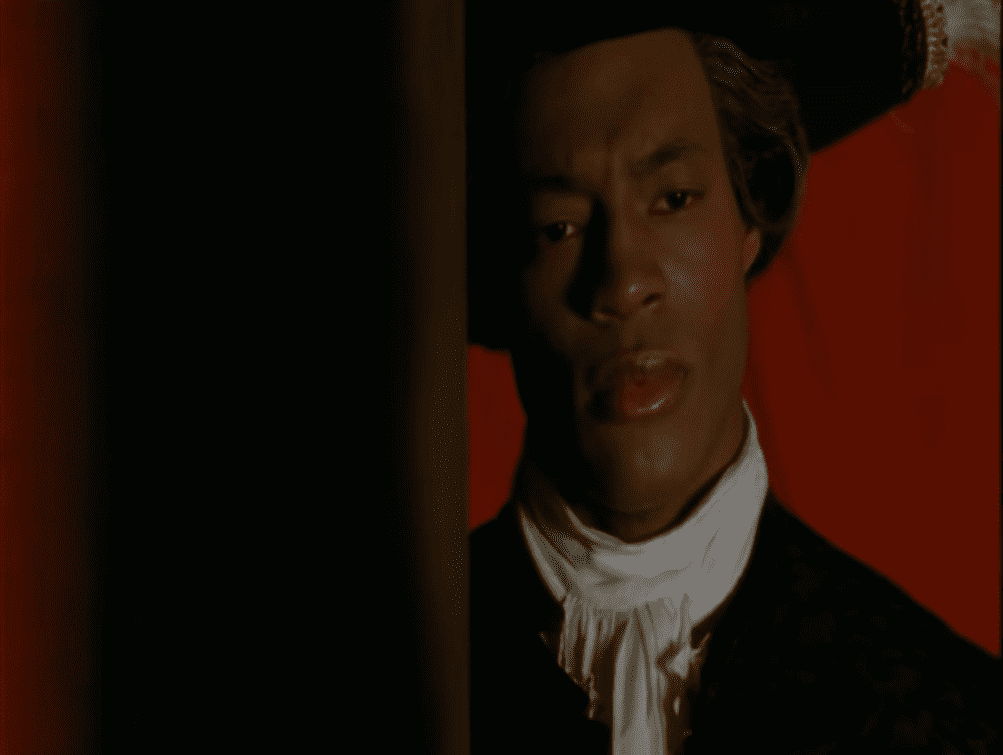 Le Mozart noir (2003), Media Headquarters
Le Mozart noir (2003), Media Headquarters
25. His Friend Betrayed Him
Marie Antoinette, St. Georges' old friend, coldly joined in on the fun. After the show for Ernestine ended, she shouted to her carriage driver, “To Versailles, Ohé!” In a single night, St. Georges' opera had gone from the next big thing to a huge disaster—and the final blow was dealt by his own dear friend, Marie Antoinette. Ouch.
26. He Made a Triumphant Comeback
Obviously, the Chevalier was not one to slink away after a defeat. Instead, our boy made a huge comeback with his next two operas, which both turned out to be major hits. After clearing his name with this impressive one-two punch, St. Georges stepped away from the French music scene. He had more important things to do—and a far more nefarious foe to defeat.
27. He Changed Gears
The Chevalier entered his most daring occupation yet: Abolitionist. Having witnessed the devastation of the slave trade, he knew all too well that the injustice and cruelty had to end. Drawing on his past training as a sword-master and his lifelong ability to charm high society, the Chevalier made his way to London. His mission was simple: Befriend Prince George of England and make him see the light.
28. He Had Fanboys
Even before St. Georges took Paris’ music scene by storm, he was already a big deal. Young jocks idolized the Chevalier’s horse-back riding skills and unparalleled fencing talents. They were so enamored with him that they even formed a little fan club, then called a “court.” With any luck, St. Georges would have the same rhapsodic effect on the Prince of Wales.
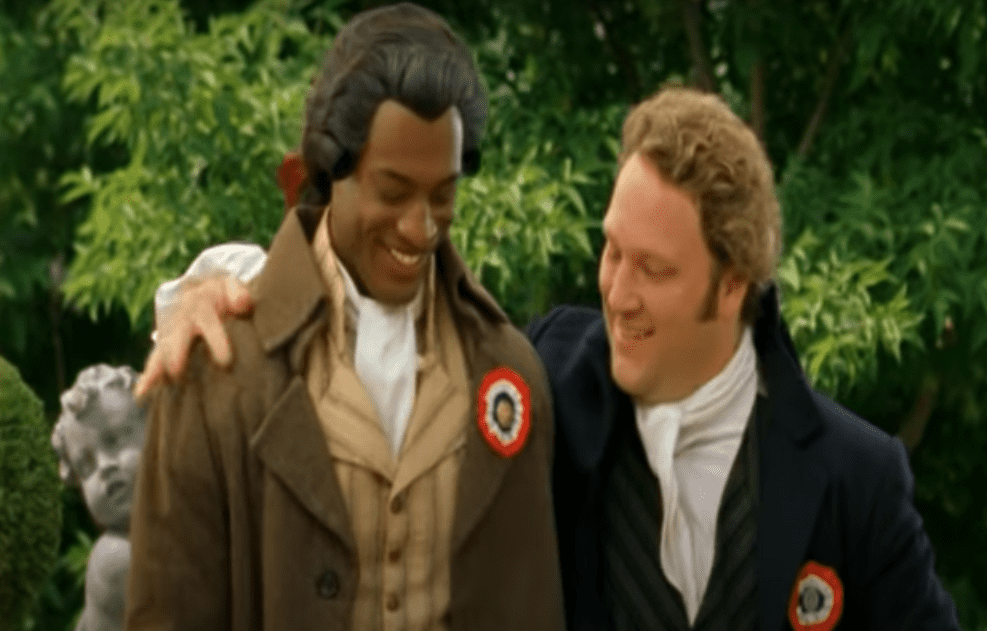 Le Mozart noir (2003), Media Headquarters
Le Mozart noir (2003), Media Headquarters
29. He Went on a Secret Mission
Luckily for the Chevalier, George IV had already heard of our hero's daring exploits and was eager to meet him. But while the Prince just wanted a new bud, St. Georges set about his plan to convince the future monarch that abolition was the way to go. However, just as St. Georges was trying to persuade the future king, his enemies were busy plotting the Chevalier’s downfall.
30. He Was Attacked
On a warm summer evening, St. Georges strolled back to his lodgings, only to be accosted by an armed bandit. The assailant shouted at the Chevalier to give up his money, not realizing that his would-be victim was basically a Black James Bond. St. Georges handily defeated his attacker—only for four more assailants to come creeping out of the darkness.
31. He Took Care of Business
Because the Chevalier was an absolute BAMF, he handily knocked out his other four attackers. But even though St. Georges escaped, the coordinated assault was a very bad sign. This wasn’t a mugging gone wrong, but an organized attempt to end the Chevalier’s life. Historians believe that people who supported the Slave Trade felt so threatened by St. Georges' abolition work that they tried to “take him out,” as Tony Soprano would say.
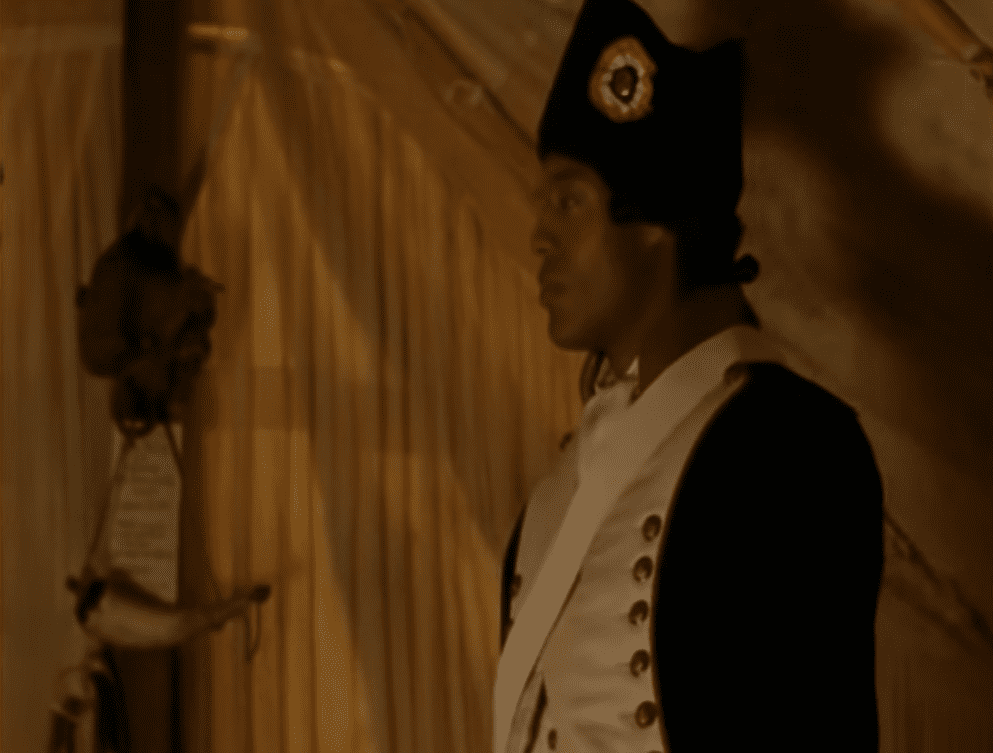 Le Mozart noir (2003), Media Headquarters
Le Mozart noir (2003), Media Headquarters
32. He Was a Cool Customer
Here’s a great detail about the Chevalier’s brush with doom. St. Georges was so unperturbed by his assailants’ pathetic attempt on his life that after brushing himself off, he strolled away and went to party with his friends. Iconic.
33. He Made the World a Better Place
During St. Georges’ time in England, he did more than take down his haters. He met with famous activists like William Wilberforce, founded a French society against slavery, and distributed abolitionist pamphlets. When the British press published a cartoon of the Chevalier, it showed him in a boxing ring beating up the Slave Trade.
34. His Fencing Matches Drew Huge Crowds
While St. Georges campaigned in London, he also had to keep up his image as the coolest man of the 1700s. And so, to remind England that they didn’t want to mess with the Chevalier, he had public fencing matches where he faced off against famous athletes. He fought the usual bros and jocks—until he duelled against the mysterious “Chevalier D’Eon.”
35. He Was Always a Gentleman
The enigmatic D’Eon, a veteran spy who was the "first openly-transvestite man in British history," fought the Chevalier as a woman, and the match was the event to see. When a painting of D’Eon’s rapier striking St. Georges emerged, England was quick to say that the hit only could have happened one way: If St. Georges let D’Eon land a hit “out of gallantry for a lady.”
36. He Was the Best Shot in France
Talk about having fans in high places. John Adams, the second president of the USA, was one of the Chevalier’s admirers. According to Adams, St. Georges was such an incredible shot that you could tell him to hit a tiny button and he’d do it without trouble. The Chevalier could even hit a coin—as it was tossed in mid-air. Again, I ask, where is the Tarantino movie about this man?!
37. He Was the Coolest
The Chevalier’s life was a blend of soap opera and action movie. Example: In 1790, while sick with a nearly fatal case of meningitis, he fought a fencing match where his arms moved like "lightning." Unsurprisingly, after this match St. Georges fell into a light coma, but thanks to the good people in the town of Lille, he made a full recovery. When he woke up, he thanked them by writing the town a custom freaking opera. It would be one of his last compositions.
38. His Enemies Lurked Everywhere
These days, we’re all down with, you know, not enslaving other human beings—but back in the 18th century, a lot of people wanted to keep things just the way they were, and they weren’t shy about letting the Chevalier know that they disagreed with his mission. When St. Georges stayed at a French hotel, the staff refused to serve him. Ever the gentleman, the Chevalier didn’t sink to their level. He held his head high and remained calm, knowing he was on the right side of history.
39. He Shocked France
By this time, France was entering the turbulent 1790s, which meant that Revolution was just around the corner. As the country’s discontented people took up arms against the aristocracy, the Chevalier stunned onlookers by turning his back on his uppity friends. Instead, he supported the rebels. While his choice must have been surprising, there was a tragic reason behind St. Georges' actions.
40. His Mother Was Ashamed
St. Georges never forgot the fact he was an outsider. In her will, his mother Nanon even signed with a different last name than her beloved son, likely because she knew that if St. Georges publicly associated with her, it would hurt his chances in French high society. After facing so much discrimination, is it any wonder that he signed up to fight for “liberty, fraternity, and equality”?
41. His Father Betrayed Him
Here’s another disheartening detail about how discrimination shaped St. Georges’ life. The Chevalier’s father may have given his son an education, but because of entrenched prejudice, he couldn’t do much more. In his will, he didn’t even mention St. Georges. Instead, he left all his wealth to his other child, his white daughter Elisabeth. Ouch.
42. He Fought for His Beliefs
With his heart on his sleeve, the Chevalier bravely led an all-Black regiment in the French Revolution. The group of 1,000 men came to be known as the Legion of St. Georges, in honor of its fearless commander. For a few years, the Chevalier was France’s golden boy—but as the Revolution transformed into anarchy, everything changed.
43. Everything Changed for the Worse
Over the years, the Revolution's motives altered. New allegiances formed and old partnerships fell away. Unfortunately for St. Georges, these shifts meant that his reputation plummeted. He went from being lauded as a hero to being condemned as a traitor. Even though he helped defeat the Austrian army, he faced a chilling fate: imprisonment.
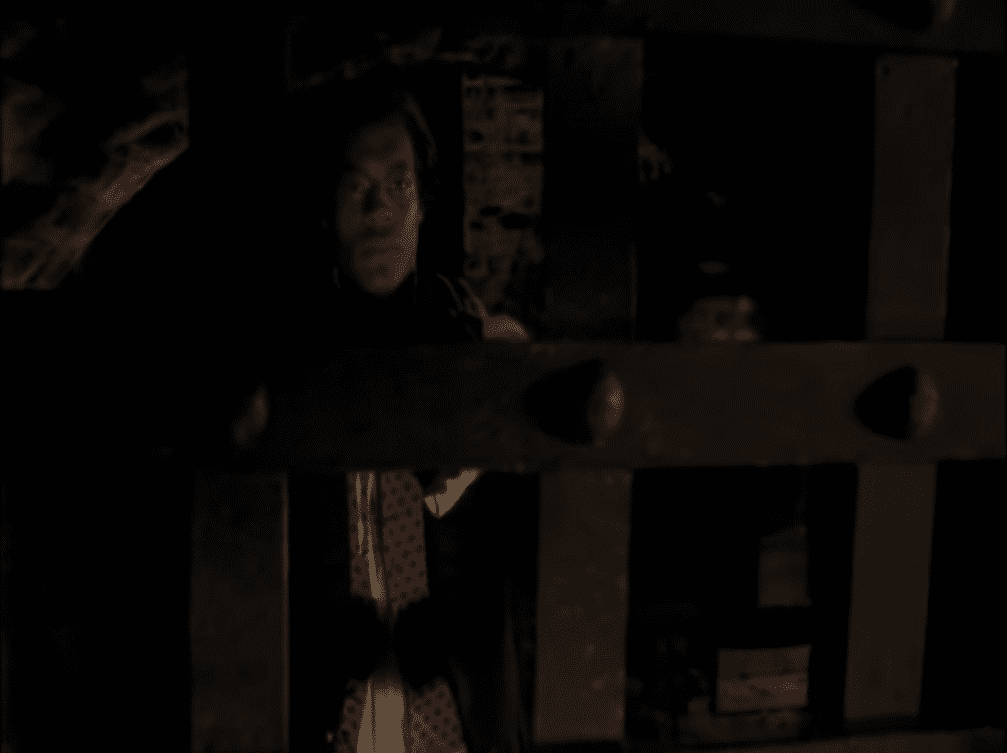 Le Mozart noir (2003), Media Headquarters
Le Mozart noir (2003), Media Headquarters
44. He Was Held Captive
Tired with St. Georges, France threw the dynamo behind bars for months on end—except that wasn’t even the worst part. Though his captors never officially charged him with a specific offence, they still kept him in his tiny, moldering cell. On at least one occasion, they even threatened to send the Chevalier to the guillotine.
45. France Was Cruel
Despite his suffering, St. Georges was actually one of the lucky ones. He managed to live through the bloodshed while many others did not. But even after the Chevalier left his cell, the world was a dark and dreary place. Not only did France refuse to give him his old position in the army, he’d missed a major event while locked up: His beloved mother Nanon had perished.
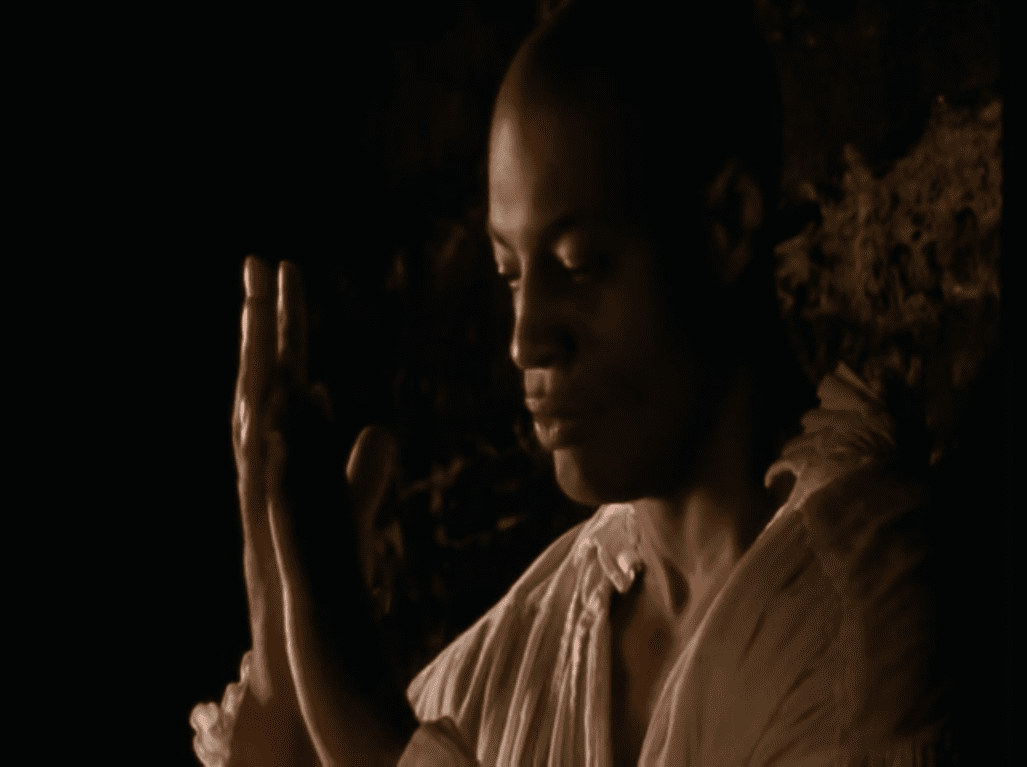 Le Mozart noir (2003), Media Headquarters
Le Mozart noir (2003), Media Headquarters
46. He Was a Changed Man
Between being imprisoned and the sad demise of his mother, St. Georges’ health was understandably shattered. Gone was the charming, vivacious composer-swordsman. The Chevalier was grieving, gaunt, and struggling with ill health. Traumatized by his pain, St. Georges retreated to his small apartment and took solace in his old friend, the violin.
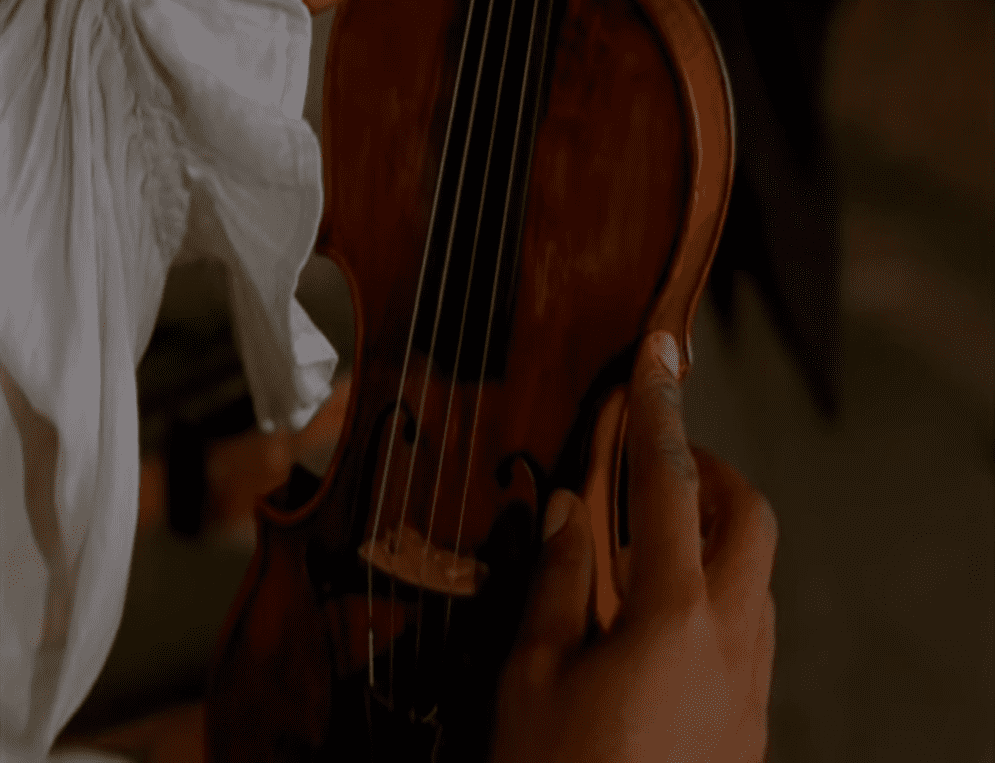 Le Mozart noir (2003), Media Headquarters
Le Mozart noir (2003), Media Headquarters
47. His Later Life Was Tragic
In 1799, St. Georges was a shadow of his past self. He was poor, he lived alone, and worst of all, he was terribly ill with symptoms that he stubbornly refused to acknowledge. After contracting a mysterious infection of the bladder, the Chevalier succumbed to gangrene. He left the world on June 12, 1799 at just 53 years old.
48. He Was a Legend
Despite his tragic final days, the Chevalier gave us plenty to celebrate. Before his passing, he saw France abolish slavery in 1794. This, combined with his musical achievements and fencing prowess, meant that, as John Adams put it, St. Georges would go down in history as “the most accomplished man in Europe.”
49. His Legacy Is Still Strong
Here’s some good news for fans of the Chevalier! His extraordinary life will be getting the silver screen treatment. There’s no word yet on who will play the composer-fencer-activist, but Stefani Robinson (who’s written for Atlanta) will pen the script while Stephen Williams (who’s directed episodes of Westworld) will helm the camera.
50. He Has a Powerful Nickname
Before I wrap up, here’s one final dig at Mozart’s distaste for St. Georges. Even though Amadeus tried to drag the Chevalier’s name through the mud, his efforts didn’t work. Modern music scholars often call the Chevalier “The Black Mozart.” Take that, Amadeus.

